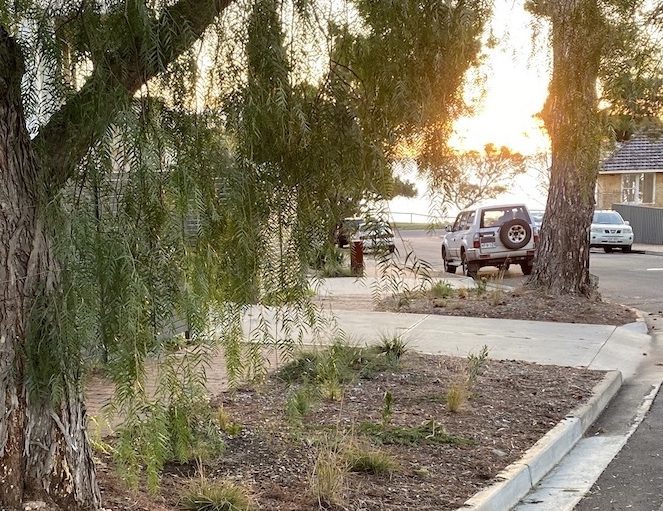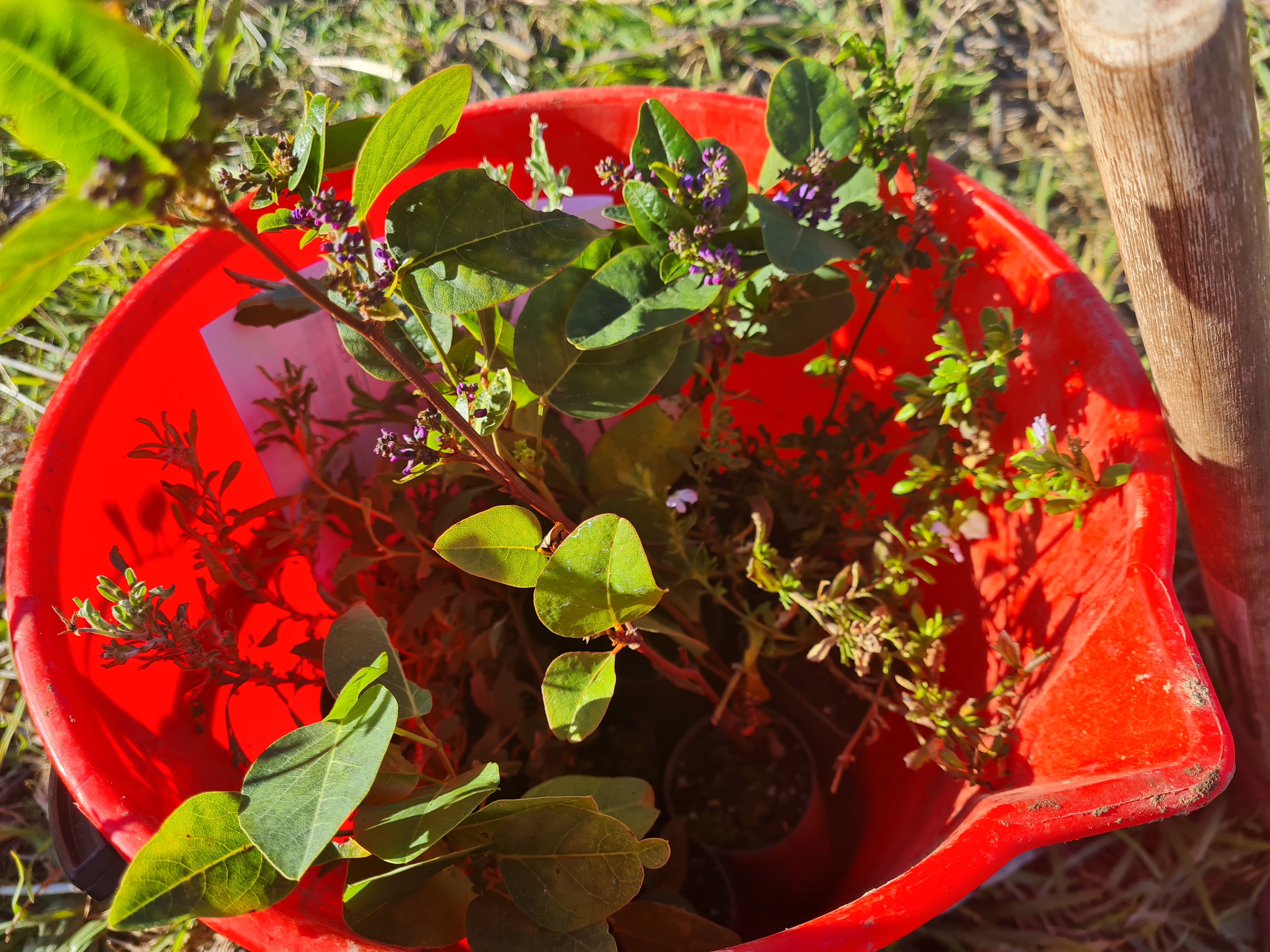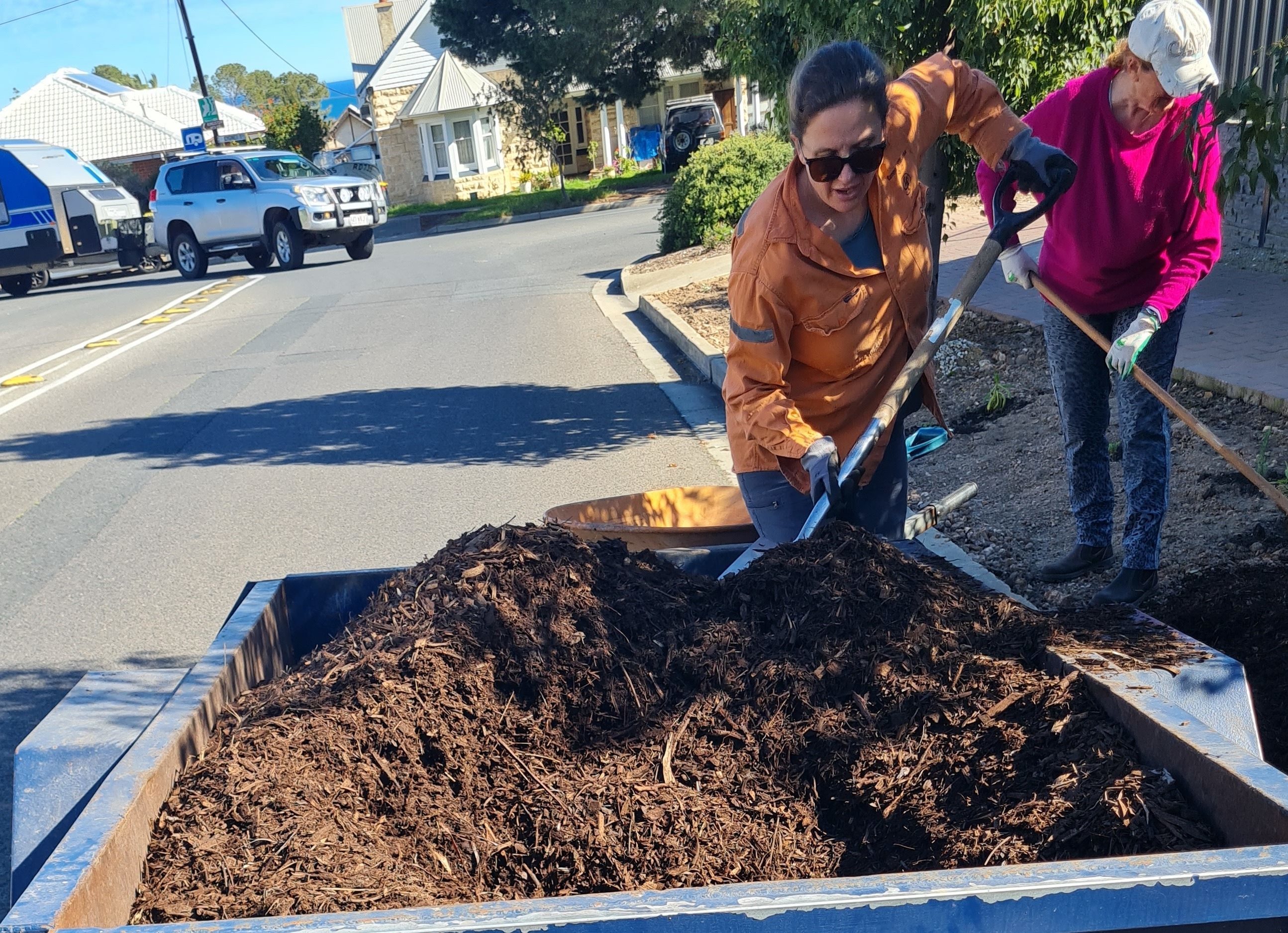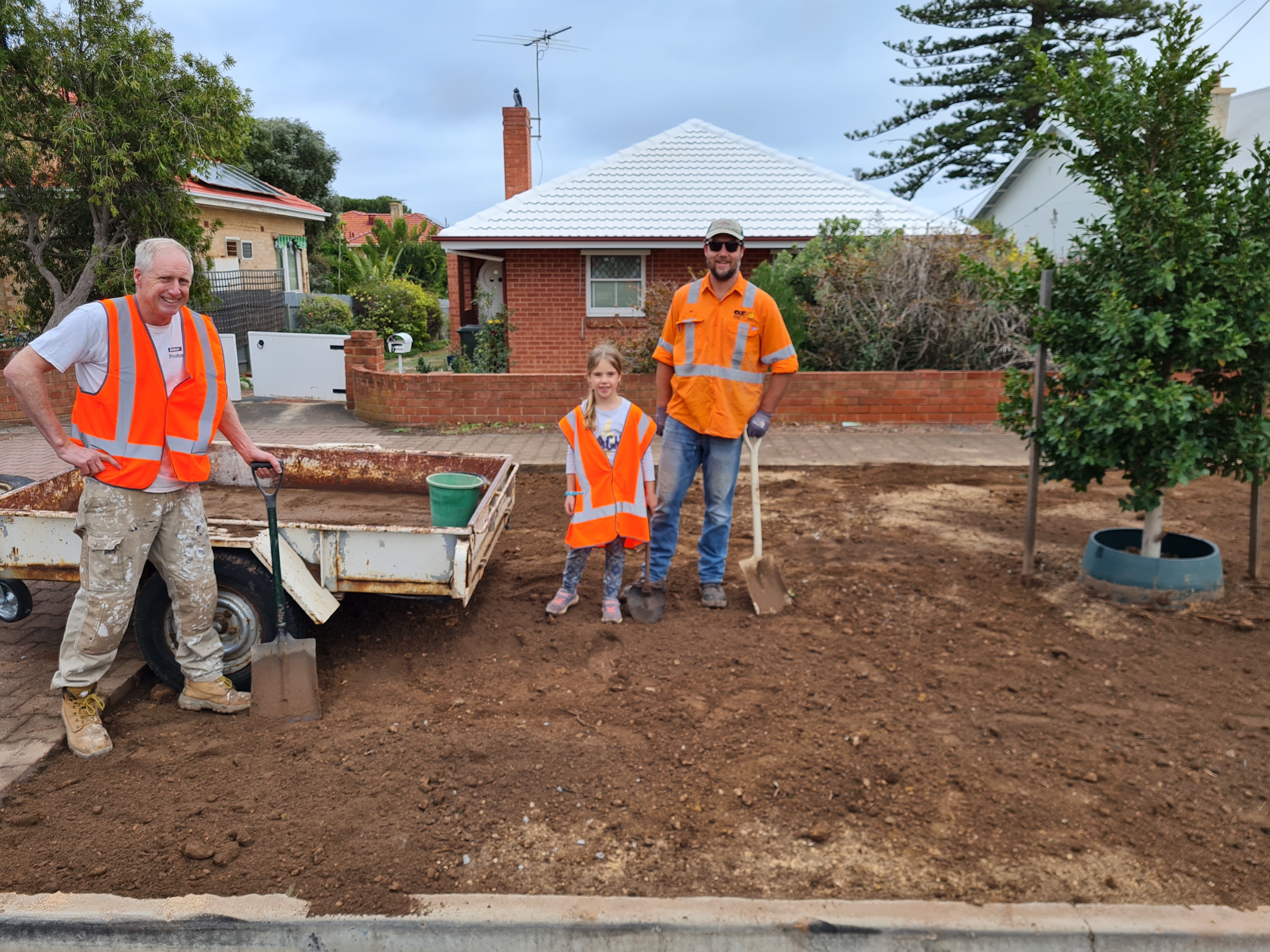A coastal community group transformed 10 neighbourhood verges into native oasis with the help of a Green Adelaide Grassroots Grant. Find out about their project and how you could do the same for your suburb.

Kingston Park, a small coastal suburb located south of Adelaide, is a popular place for visitors with a stunning beachside reserve and a caravan park overlooking Gulf St Vincent. This stretch of coastline is also of great cultural significance to the Kaurna people as it marks the beginning of the Tjilbruke Dreaming Track.
As picturesque as coastal areas can be, they don’t always go hand in hand with greening. It can be hard to keep gardens thriving with the cooler temperatures, wind and sand.
Thankfully, there is a huge range of native plants that were made for life around the coastline and with a little planning it’s possible to have a beautiful and resilient seaside garden.
Another wonderful way to boost your green space in any suburb is to transform the gravel or weedy verges into native gardens, attracting more bees, butterflies and birds and creating beautiful places to live and visit.
This is exactly what Lynda from the local residents’ association 5049 Coastal Community did in her suburb of Kingston Park with the help of a Grassroots Grant. Read on for more about Lynda’s Grassroots Grants story:

Why is this grant project important?
Adelaide’s coastlines support ecosystems that are home to a diverse range of unique plants and animals. You can spot anything from a blue-tounge lizard to an echidna or one of Australia’s most threatened beach nesting bird.
Our coastal environments are susceptible to the effects of climate change and are already under stress from issues caused by human activity.
Native verges are an ideal way to support these ecosystems, as they help to connect and restore habitats and create more spaces for plants and animals to grow and breed.
As well as improving biodiversity, verge gardens are also wonderful for stormwater management. They help rainwater soak in, minimising runoff and pollution out to sea.
By planting local natives, you know they are suited to the climate in your area and once the garden is established, they don’t require as much water. Another great idea is to use mulch as this holds in the moisture and protects the native verges from weeds emerging.

How did the Grassroots Grant help?
The Grassroots Grant enabled Lynda and the 5049 Coastal Community group to transform 10 verges along 4 streets surrounding the entrance to Kingston Park. The total area covered was around 500 square meters and included over 500 native plants.
It took an incredible effort from volunteers to complete the project with 16 working bees held from June to September 2021.
Before any planting could take place, the verges needed to be prepared by removing the existing dolomite (grey, gravel-like covering). This was too difficult for the volunteers to do by hand, so Lynda arranged for a contractor through their local council to remove it.
Unfortunately, the contractor also removed a lot of soil along with the dolomite. This meant that the volunteers had their work cut out for them in returning the soil to the verges. A few extra working bees and many wheelbarrows later, the soil was ready for planting.
The ground was prepared with gypsum, water retention pellets and native plant fertiliser. The plants were then watered, and a generous layer of mulch was added to help the gardens retain water and discourage weeds from sprouting.

How did the project improve the environment for the community?
The native verges have improved the appearance and biodiversity of the area and will only look better as they grow over time.
The old verges filled with dolomite didn’t allow water to soak in. The new verges planted with natives and mulch help improve soil moisture and have an overall cooling effect. The native plants will also eventually benefit the health of existing street trees and support local wildlife like birds and butterflies.
Lynda felt that one of the positive outcomes of the project was that it helped to open conversation and encourage interaction with residents from the area she had not previously known.
She also said that the working bees were great for social interaction. Some of the residents had not met their neighbours until they volunteered for a planting day. She also discovered that one of her neighbours worked as a groundsman, and as a skilled gardener he was more than happy to maintain a verge near his property.
One resident told Lynda she had been hand watering the new verge plants and that this had been beneficial exercise for her. She also witnessed quite a few passers-by and cars stop to congratulate them on the work and say how it had improved the area.

Apply for the next round of Grassroots Grants
Green Adelaide’s Grassroots Grants is an annual program that puts much needed funds into the hands of individuals and groups to help them transform their local environment.
Round 3 of the Grassroots Grants is now open until 29 June 2022. To find out more visit the grants webpage.

Words of advice for future grant applicants
Lynda had some difficulty getting all the verge owners on-board with the project. This may have been because they are required by council to maintain the completed gardens, or they didn’t fully understand what the group was trying to achieve.
She overcame this issue by spending more time discussing the project with them and often found face-to-face encounters were more successful than letterbox drops.
Once the planting had started, she found it caught the eye of some other nearby residents who expressed interest in transforming their verge in future projects.
Lynda said engagement with your local council is a must and she said they were supportive of the project and helpful when it came to arranging the verge development forms, and even lending tools and hi-vis vests for the volunteers.
She also found that her local plant nursery was helpful in providing advice on suitable plants for their local conditions and the company that provided the mulch and gypsum also gave her good advice.